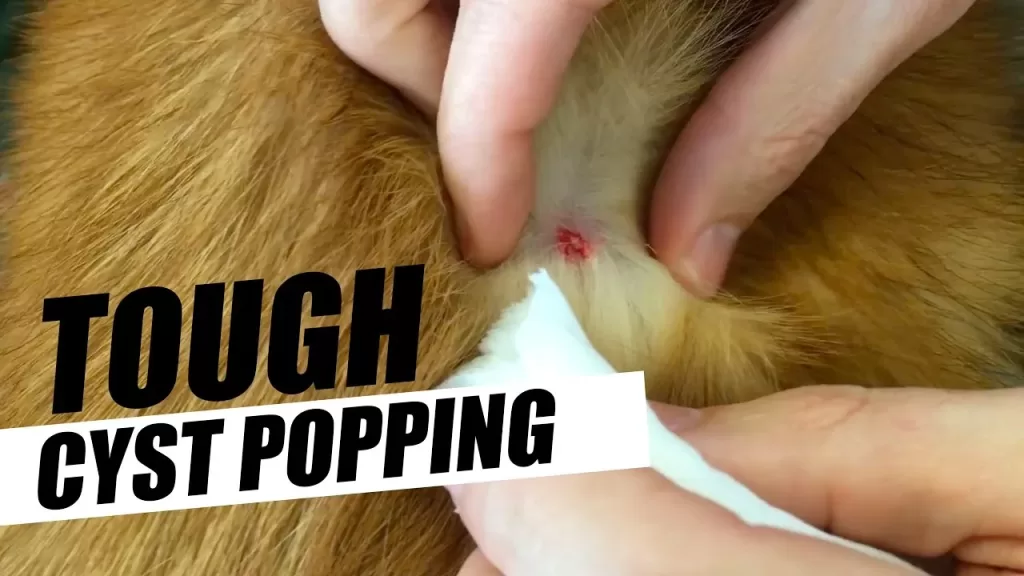Skin cysts in dogs are not dangerous, but they can become infected. Dogs that suffer skin cysts should not be allowed to lick or scratch wounds which can lead to infection.
Table of Contents
Skin cysts are common in dogs and vary in size, shape, and location. Cysts are fluid-filled sacs that develop beneath the surface of the skin.
Most of these sacs are benign (not cancerous or precancerous), but some can be harmful to your dog’s health.
Technically, a cyst is a sac in the skin that is covered with secretory cells. Fluid builds up inside the bag, causing swelling on the skin surface.
Also Read: At What Age do German Shepherds Baby Teeth fall out? Complete Teeth Care
Some cysts are fluid, while others, as the fluid dries over time, have a hard, cheese-like substance inside.
Cysts form in middle-aged or older dogs and are commonly associated with breeds such as German Shepherds, Boxers, and Cocker Spaniels.
Are skin cysts dangerous in dogs?
No, cysts are not dangerous in themselves. The biggest risk factor for cysts is that when the tumor is mistakenly diagnosed as a cyst it is a tumor.
To prevent this, many veterinarians pop a fine needle into the lump and inhale it back into the syringe. A cyst should be given a small sample of the inner core, which is an easy way to confirm the diagnosis.
Other signs of a cyst on your dog are:
- The Cyst or lump has a rounded shape.
- The Cyst or lump has different edges and you can feel it all the way around.
- It is superficial, meaning you can lift it out of the underlying tissue.
- It is not itchy (itching may be a sign of a particularly aggressive skin tumor).
- It slows growth.
It is always best to have any new lump checked by a veterinarian.
Also, measure and record the size of the tumor and take photos so that you or your veterinarian can see if the tumor is large.
Skin cysts in dogs
Skin cysts on dogs are usually not dangerous, but if they are infected, it’s time to see a veterinarian.
What is a cyst on a dog look like?
- Cysts on the surface of the skin or below the surface.
- Feels like a round nodule.
- It can be soft or filled with liquid.
- Cysts on the surface are often bald and are associated with a patch of hair falling out.
When the pressure inside the dog’s cyst increases, sometimes a weak spot forms. Then, if the cyst touches it, it may burst with the fluid coming out through that weak point.
The malignancy of the cyst varies widely depending on the type. Inside we can find anything from clear, grassy liquid to gray, cheese-like substance.
Surgery is usually not necessary
If your veterinarian confirms that it is a cyst, do not hurry to remove it.
Instructions for removal
- Cysts trapped under the collar or saddle or damaged when the dog is brushed
- The infected cysts does not respond to antibiotics
- Surgical removal of skin cysts in dogs is a relatively simple procedure depending on the location. When cyst access is easy your pet’s surgery can often be done under anesthesia and local anesthesia.
Should you pop your dog’s cyst?

No, please do not pop it. Squeezing the cyst causes its contents of it to fall into the surrounding tissue, where it forms a foreign body reaction, resulting in swelling and inflammation.
If the cyst ruptures periodically, do the following:
- Cut the hair and wash the area with weak salt water.
- Squeeze the rest of the cyst contents.
- Monitor the hole for signs of infection such as odor, and yellow-green discharge.
The happy thing about a freshly ruptured cyst is that the lump disappears for a while. This is only temporary because the lining is still there and is capable of secreting more material.
This means that once the skin has healed, the cyst will slowly refill.

